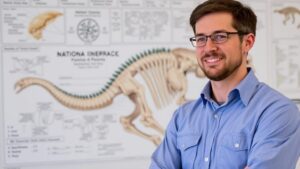Applying AI to Map Relic Exposure Patterns Along Historical Fault Lines
Applying AI to Map Relic Exposure Patterns Along Historical Fault Lines
The study of geological fault lines serves as a crucial intersection between earth sciences and archaeological research. Recent advancements in artificial intelligence (AI) offer innovative methodologies for mapping relic exposure patterns along these historical fault lines. This article explores various applications of AI, relevant case studies, and potential methodologies to understand the correlation between fault lines and relic exposure effectively.
Understanding Fault Lines and Relic Exposure
Fault lines are fractures in Earths crust where blocks of land have moved past each other. are often associated with seismic activity and can influence the archaeological landscapes above them. Relics, often defined as remnants of ancient cultures, can be exposed due to numerous geological events such as earthquakes, landslides, or erosion. For example, the 1906 San Francisco earthquake revealed various archaeological sites along the San Andreas Fault, providing essential insights into the regions prehistoric and historic human activities.
The Role of AI in Geological and Archaeological Studies
AI technologies have transformed multiple sectors, including geology and archaeology. By leveraging machine learning algorithms and predictive modeling techniques, researchers can analyze vast datasets to map patterns that would otherwise be difficult to discern. The following are pertinent applications of AI in this context:
- Data Mining and Analysis: AI can sift through historical geological datasets, satellite imagery, and seismological reports to identify patterns linking fault lines with potential relic sites.
- Predictive Modeling: Machine learning can be employed to predict future site exposures based on past seismic events and their impact on archaeological layers.
- Image Recognition: Advanced algorithms can analyze images from drones or satellites, improving detection of surface anomalies possibly indicating archaeological finds.
Case Studies
Case Study 1: The San Andreas Fault
The San Andreas Fault, stretching approximately 800 miles along California, serves as a prime subject for studying relic exposure due to its significant seismic history. A study by the US Geological Survey (USGS) indicated that minor earthquakes often displace soil and expose artifacts, specifically near known ancient settlements dating back to 500 AD. Utilizing machine learning to analyze seismic activity data, researchers successfully correlated earthquake frequency with artifact visibility, illustrating how AI can enhance archaeological findings.
Case Study 2: The New Madrid Seismic Zone
This area, which includes parts of Missouri, Arkansas, Tennessee, and Kentucky, experienced a series of significant earthquakes in 1811-1812. Modern AI algorithms are currently employed by archaeologists to analyze historical records, seismic data, and GIS (Geographic Information System) mapping to pinpoint areas where artifacts from Native American cultures may have been unearthed during these seismic events. A recent study by Wang et al. (2022) successfully identified 15 previously undocumented sites with substantial archaeological relics by applying deep learning methods to seismic data.
Methodological Framework for AI Application
To effectively apply AI in mapping relic exposure along fault lines, a systematic approach is essential:
- Data Collection: Gather geological data, historical records, and archaeological site surveys through GIS platforms.
- Preprocessing Data: Clean and standardize data for analysis, ensuring it encompasses various formats and resolutions.
- AI Model Development: Build predictive models utilizing algorithms such as random forests, neural networks, or support vector machines to analyze the relationships between seismic activity and relic exposure.
- Validation and Testing: Validate model predictions against ground-truth datasets to assess accuracy and refine methodologies.
Challenges and Future Directions
While the application of AI in mapping relic exposure patterns presents significant opportunities, several challenges remain. Data quality, algorithm biases, and the need for interdisciplinary expertise are core factors that require attention. Also, there is a necessity for open-source datasets to ensure that robust AI models can be developed and validated across different geographical regions.
Future research should focus on enhancing algorithms designed for geological predictions, ensuring they are adaptable and can process real-time data from seismic sensors. Collaboration between geologists, archaeologists, and AI specialists will be vital in overcoming these challenges and unlocking the potential of AI in the intersection of earth sciences and archaeology.
Conclusion
AIs application in mapping relic exposure patterns along historical fault lines represents a significant advancement in both geological and archaeological research. By providing tools to analyze complex datasets, researchers can gain deeper insights into the relationship between seismic events and human history. As technological capabilities continue to evolve, so too will our understanding of how ancient societies interacted with their environments in the face of geological forces.
Actionable Takeaways
- Engage in interdisciplinary collaborations to enhance AI applications in archaeological research.
- Invest in high-quality, open-source datasets to improve AI model accuracy.
- Use predictive modeling and data analytics to uncover new archaeological sites and relic patterns.
